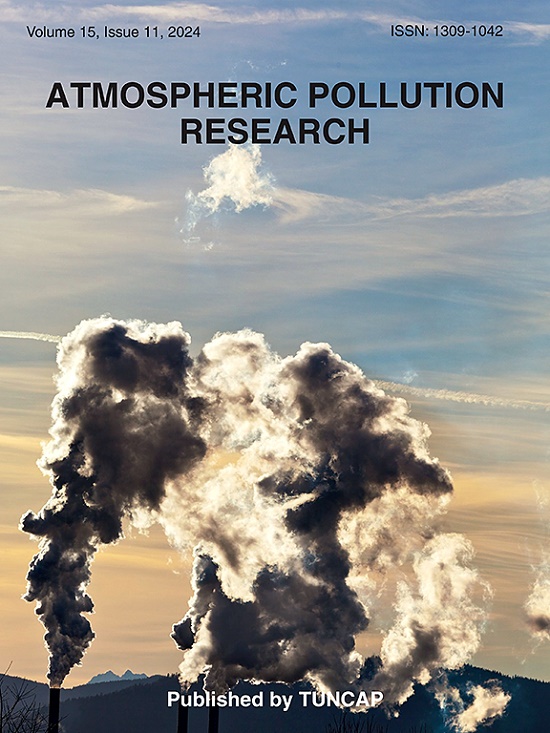Research on the path of atmospheric pollutants and greenhouse gas cooperative control in megacities - A case study of Chengdu
IF 3.5
3区 环境科学与生态学
Q2 ENVIRONMENTAL SCIENCES
引用次数: 0
Abstract
Cooperative control of pollution and carbon is essential for building a beautiful China and achieving the carbon peak. The pollution and carbon emission inventories used in existing cooperative control research are usually prepared based on different data, which may cause great uncertainty in the proposed cooperative control measures. In this research, focusing on achieving the air quality standard and carbon peak (hereinafter referred to as dual goals) and taking Chengdu as a case study, an integrated pollution and carbon emission inventory was built based on a unified source emission framework structure; and a pollution and carbon coupling analysis method of economic development-energy consumption-atmospheric pollutant emissions at the urban scale was established combined with the LEAP-Chengdu localization model; in addition, the path of atmospheric pollutant and greenhouse gas cooperative control were proposed based on the improvement effect of PM2.5 and O3 concentrations. The results show that the main sources of pollution and carbon emissions in Chengdu are transportation, stationary combustion and industrial process, and transportation contributes 86.8 % of the total NOx emissions. Under the carbon peak scenario, Chengdu's greenhouse gas emissions are expected to reach a peak in 2028. New energy alternatives for transportation will become the main driving force. Based on the carbon peak scenario, cooperative control scenarios with more stringent measures may achieve air quality improvement goals. To achieve the dual goals in 2030, all existing process technology and end-of-pipe emission control measures for atmospheric pollutant emission reduction need to be applied.
特大城市大气污染物路径与温室气体协同控制研究——以成都市为例
污染和碳的协同控制是建设美丽中国和实现碳峰值的必要条件。现有合作控制研究中使用的污染和碳排放清单通常是基于不同的数据编制的,这可能会给提出的合作控制措施带来很大的不确定性。本研究以实现空气质量标准和碳峰值(以下简称“双目标”)为重点,以成都市为例,基于统一的源排放框架结构,构建污染与碳排放综合清查;结合leap -成都地域性模型,建立了城市尺度下经济发展-能源消费-大气污染物排放的污染与碳耦合分析方法;此外,基于PM2.5和O3浓度的改善效果,提出了大气污染物与温室气体协同控制的路径。结果表明:交通运输、固定燃烧和工业过程是成都市主要的污染源和碳排放源,交通运输对氮氧化物总排放量的贡献率为86.8%;在碳峰值情景下,成都的温室气体排放量预计将在2028年达到峰值。新能源替代交通工具将成为主要推动力。基于碳峰值情景,采取更严格措施的协同控制情景可以实现空气质量改善目标。要实现2030年的双重目标,需要应用现有的大气污染物减排的所有工艺技术和管端排放控制措施。
本文章由计算机程序翻译,如有差异,请以英文原文为准。
求助全文
约1分钟内获得全文
求助全文
来源期刊

Atmospheric Pollution Research
ENVIRONMENTAL SCIENCES-
CiteScore
8.30
自引率
6.70%
发文量
256
审稿时长
36 days
期刊介绍:
Atmospheric Pollution Research (APR) is an international journal designed for the publication of articles on air pollution. Papers should present novel experimental results, theory and modeling of air pollution on local, regional, or global scales. Areas covered are research on inorganic, organic, and persistent organic air pollutants, air quality monitoring, air quality management, atmospheric dispersion and transport, air-surface (soil, water, and vegetation) exchange of pollutants, dry and wet deposition, indoor air quality, exposure assessment, health effects, satellite measurements, natural emissions, atmospheric chemistry, greenhouse gases, and effects on climate change.
 求助内容:
求助内容: 应助结果提醒方式:
应助结果提醒方式:


